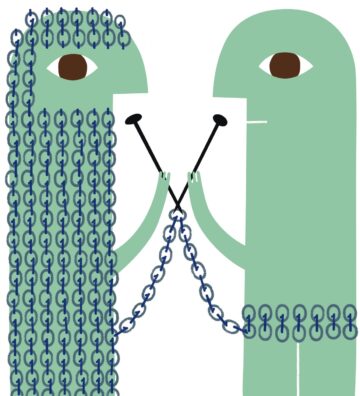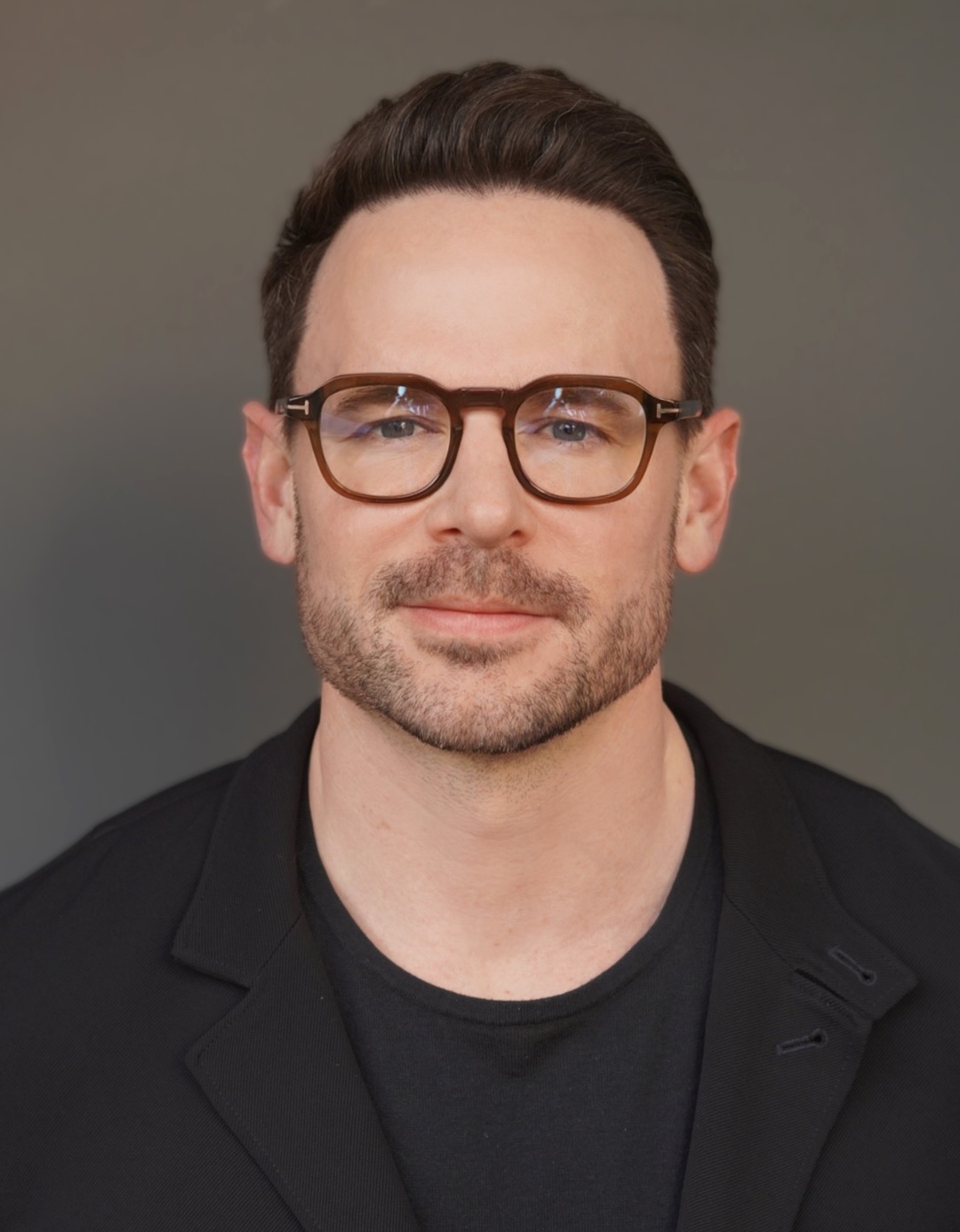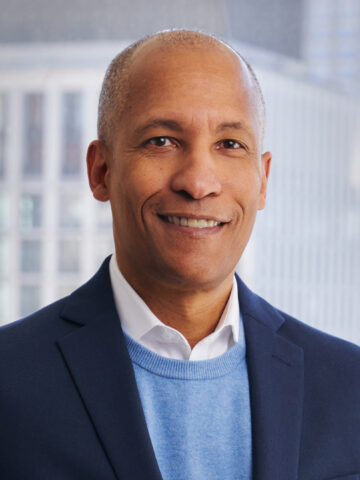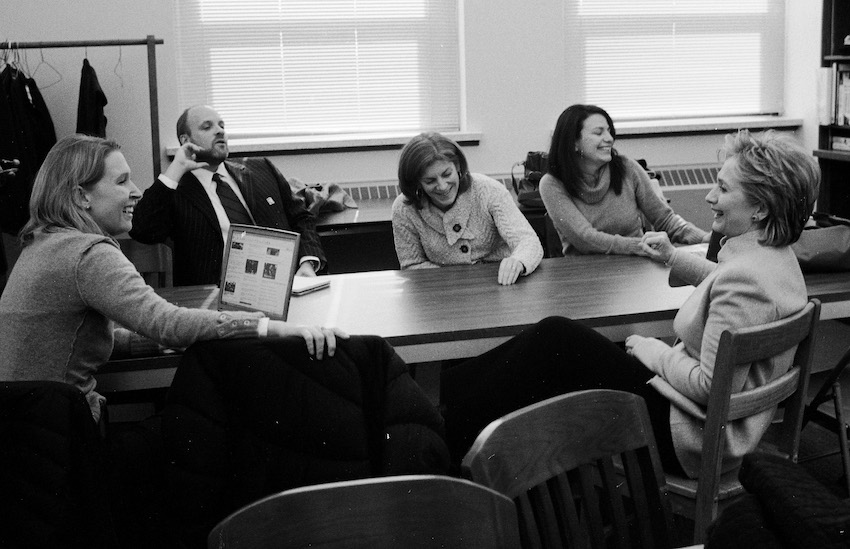OneTeam Partners is delivering financial justice to third-string linemen, female players and other undervalued competitors across a growing number of professional and college sports.
Few fans know more about the game of football and the athletes who play it than Sean Sansiveri. But don’t bother asking which team he supports. The final score isn’t what matters most.
“I root for no injuries,” he says.
Sansiveri isn’t a physician, yet medical journals are what he reads over his morning coffee. The habit traces back to his decade-long tenure overseeing health, safety and medical research at the NFL Players Association. Now as CEO of a company called OneTeam Partners, he strives to maximize the financial health of athletes and their unions. Created in 2019 by the NFLPA and the Major League Baseball Players Association—the unions for professional football and baseball players, respectively—OneTeam now also represents six other players associations, including the union for WNBA players, Major League Soccer players and US Women’s National Team soccer players, as well as tens of thousands of college athletes.
OneTeam’s core purpose is to serve as the commercial engine of the players associations, maximizing revenue from the commercial use of athlete names, image and likeness alongside players associations IP, events and other assets. To outsiders, it may sound like an effort to make rich athletes richer—but in reality, it’s about strengthening the unions that protect them. The average NFL career lasts less than three years, and most players never come close to the multimillion-dollar contracts of stars like Patrick Mahomes. Revenue from group licensing and other commercial efforts doesn’t just benefit players—it helps build the financial backbone of the players associations themselves. Doing it at OneTeam, a diversified and growing platform with access to capital and commercial talent that unions themselves typically do not, enhances PA leverage. That, in turn, strengthens the unions’ ability to negotiate with billion-dollar leagues, advocate for player health and safety, and fight for fair treatment in an industry where the balance of power has long favored the owners. Since its inception, OneTeam has struck lucrative deals with makers of trading cards, video games, jerseys, sponsors and more. It distributes its gains to athletes via their unions, and those licensing payoffs having grown exponentially in OneTeam’s six years, especially for women athletes. Meanwhile OneTeam itself has evolved into a business with an enterprise value approaching $2 billion.
Before OneTeam, Sansiveri served as General Counsel and Head of Business Affairs with the NFL Players Association, where he ran the union’s revenue generation efforts as well as its health, safety and medical research initiatives. The latter “resulted in the creation of the NFL’s first standardized protocol governing the evaluation and management of concussions,” says the OneTeam website.
The child of schoolteachers in a working-class New York town, Sansiveri studied Industrial & Labor Relations at Cornell and received a law degree from Villanova University. He later served as an Associate General Counsel for the AFL-CIO, a consortium of labor unions.
On a business trip to New York, Sansiveri sat down for an interview with Brunswick Partners Michael Fitzpatrick and John Simons.
How did you become so deeply involved in sports?
It was never my plan. Back in ‘09, I was practicing law, primarily mergers and acquisitions in the pharmaceutical industry. One day I saw a headline about the impending NFL lockout. I reached out to one of the greatest mentors in my life, the late great Richard Trumka, President of the AFL-CIO—just to get his perspective. He offered to put me in touch with DeMaurice Smith, the new executive director of the NFLPA. I had a great conversation with De about possibly affiliating his union on the national, state and local level with the AFL-CIO. The conversation really opened the door to what would eventually become a much deeper relationship between the broader labor movement and the NFL Players Association.
The reason to do that in connection with the lock-out was to shift the narrative. At the time, the media seemed fixated on the idea of millionaire athletes versus billionaire owners. We wanted to change the focus to something more real and relatable: impact on workers and local economies. What happens to stadium workers if the NFL cancels games? What happens to hotel workers if games aren’t played? How much revenue is lost in a particular city if the League decides to shut down football? How are the fans impacted? We hired economists and showed how devastating the lockout would be to communities and workers. Ultimately, our work got the Senate Commerce Committee engaged, and that very much helped get a deal done in the end.
The NFLPA brought me in as a consultant to run that labor strategy and the AFL-CIO hired me as an associate general counsel during that period. I worked in both organizations to connect the dots. That’s what led to my career at NFLPA.
We’ve seen time and time again that the labor movement can lean in and assert traditional working-people values in support of athletes. That means fighting for better benefits, ensuring access to quality healthcare, pushing for stronger workplace safety standards, and protecting things like workers’ compensation and post-career disability support. Whether it’s advocating for concussion protocols in football or maternity-related employment rights in women’s sports, the labor movement brings the tools and experiences to treat athletes not just as entertainers—but as workers deserving of dignity, protection and a voice on the job.
“We’ve seen time and time again that the labor movement can lean in and assert traditional working-people values in support of athletes.”
What problems was OneTeam founded to solve?
OneTeam was created to provide a unified commercial platform for all athletes—a scalable way to monetize their group rights, unlock new revenue from media, gaming, apparel, content and business building. In other words, OneTeam turns collective athlete power into collective athlete profit—and helps the players associations compete with the billion-dollar leagues they negotiate against. In many ways, OneTeam is the next iteration of Marvin Miller’s vision. Miller was the legendary MLB Players Association executive director who created and implemented group licensing back in the late ’60s.
Behind group licensing is the legal fact that a player owns the right to his or her name and image. If it is monetized, whether on trading cards or apparel or television commercials or in video games, the player deserves fair compensation for that use. But very few product manufacturers would be capable of negotiating thousands of separate contracts for each player in a given league. Beyond that, it would just take too much time, and products wouldn’t get to market to meet fan interest.
Group licensing puts all those rights in one place, creating for brands and manufacturers a one-stop shop for every player. Miller’s vision was that the union could return more value to the players than each player would pay to their union in the form of union dues, fund the operations of a strong union and put enough excess revenue aside to support players during a strike or lockout.
Over the past decade, many players associations have made great strides toward realizing Miller’s vision. Today, the NFLPA generates nearly $400 million of licensing and sponsorship revenue which pays all players, funds union operations and strengthens the union’s bargaining position. The NFLPA now has more than a billion dollars in its “war chest” to fight that next work stoppage. That doesn’t happen overnight or without innovation.
But even that success pales in comparison to the resources at the Leagues’ disposal. So in late 2019, NFLPA and MLBPA came together and said, “We’re pretty good at this, but how do we make it even more successful for our members?” And from that question, OneTeam was created as a unified commercial platform obsessively focused on maximizing the value of the athlete and PA intellectual property.
Today, OneTeam represents eight professional sports unions, along with more than 20,000 college athletes. It represents players associations around the world and has diversified sources of revenue by opening new licensing categories, expanding direct sponsorships for players associations and athletes, and building new businesses. We’re still early in our journey, but we’re incredibly proud of the progress made so far—a testament to the vision, effort and dedication of the players associations and our staff.
Does your team consist mostly of labor leaders?
No. While we have lots of in-house labor experience, OneTeam is powered by industry-leading experts in sports business and commercialization. Our President, Frank Arthofer, for example, was formerly the head of consumer products and digital at F1, driving the resurgence of the entire sport through initiatives like Drive to Survive. Our CFO, Melissa Betts, came from Disney/ESPN and the Action Network. Our Head of Games, Ashwin Desai, has 10-plus years of experience from NBC Universal, F1 and 2K. That level of expertise extends across our entire team, reflecting the depth, talent and commitment that defines OneTeam. The ability to tap into that level of commercial expertise in the context of a union’s commercial business is invaluable. But we of course prioritize hiring commercial experts who also believe deeply in the labor movement.
“NFLPA and MLBPA came together and said, ‘We’re pretty good at this, but how do we make it even more successful for our members?’ And from that question, OneTeam was created.”
Has there been a shift in the popularity of players versus teams and leagues?
Absolutely. We are living in the athlete era where the commercial value of a given sport is being primarily driven not by the logos or league branding, but by talent on the field, the court or the ice. This shift mirrors the broader transformation across industries in today’s creator economy, where individual voices, not institutions, move markets.
When I first started in this business, leagues insisted the value lived in “the shield”—in the team IP, league marks and logos. Players were often discouraged from building media presences off the field. But then the numbers made it impossible to ignore: Athletes like LeBron James had more followers than every league combined. That changed everything. Fandom began to shift around the athlete as the central figure, and the industry followed—with new models built to connect directly with players through social media, branded products and storytelling that feels real. That’s why we say it’s no longer the logo on the front of the jersey that drives the value—it’s the name on the back.
It sounds as if OneTeam is democratizing the business. Michael Jordan wasn’t the only player on the Bulls after all.
That’s exactly right. Group licensing benefits every athlete—whether they’re a star player or a backup playing the critical support role. But perhaps even more importantly, OneTeam is pushing into areas of the commercial market where players associations haven’t traditionally had a presence. We’re helping unlock entirely new revenue streams: from online sports business and original IP creation to human performance, medtech, original content, venture investing and international expansion. We’re doing so in a way that places athletes and their unions in the ownership position—ensuring they’re not just participants in the value being created, but equity stakeholders in shaping the future of the athlete economy.
Is healthcare also an area of revenue growth?
For sure. Athletes are the 1% healthiest humans on the planet, from a performance and often a physiological standpoint. There’s a lot we can learn from them. For instance, there could be unique strains of microbiome in elite athletes that contribute to their unique performance capabilities. What if we could identify those strains and commercialize them through consumer-packaged goods like probiotics? It’s just an idea, but there are a lot of possibilities.
When I was at the NFLPA, we launched the football player health study at Harvard. It is a longitudinal study designed to understand the incidences and severity of illnesses and injuries that result from professional football. Over the last 10 years or so, they’ve had over 80 novel findings, discoveries like the higher risk of myocarditis in life after an ACL tear. But longitudinal research takes time, so it also focuses on advancing novel treatments and diagnostics.
To date, the study has funded the commercialization of numerous disruptive technologies. Innovations like an antibody therapy for tau protein aimed at treating neurodegenerative diseases, self-titrating hydrogels, bridge-enhanced ACL repair, a non-invasive glucose monitor and many more.
Are there other novel commercial opportunities?
Plenty, but prioritization is crucial. OneTeam is building its own venture fund. We believe equipment—bats, gloves, cleats—is ripe for disruption. Women’s collectibles, international expansion and AI are all examples of novel commercial opportunities.
It has been reported that union royalties for women’s sports have increased 10 times under OneTeam. Is that accurate and can it continue?
Ten times might be light. And it can absolutely continue. It’s not even close to peaking. We’re at the beginning stages and we have a lot of runway in terms of supporting the rising success of women athletes. The appetite from fans, brands and media is growing rapidly—not as a moment, but as a movement. With the right investment, infrastructure and storytelling, we’re only scratching the surface of what’s possible.
How much potential do you see internationally?
We launched an international division last year that in the months ahead will become a stand-alone company. We’ve already partnered with Japanese baseball players, Swedish hockey players and Australian rugby players. And the idea is that these athletes need to have control of their destiny and their future in the context of their commercial rights. They don’t always have that. What we’ve learned time and time again is the league is never going to maximize the players’ rights to the extent they should be maximized.
The goal with our international business is finding and capturing commercial opportunities for players around the globe by leveraging the same infrastructure that we have here with the NFLPA, MLBPA, WNBPA, MLSPA, NWSLPA and others.
Defending athlete rights must require an elite team of lawyers. Do you have your own legal department or do you hire outside lawyers?
We have a small group of badass lawyers led by our chief legal officer and managing director, Tim Slavin, who has been with OneTeam since its inception. Tim started his career at the Department of Justice and among other positions served as president for MLBPA’s commercial subsidiary. Whether it’s our legal team or our commercial leaders, the defining feature of this organization is a relentless dedication to the players and to the labor movement that represents them.
More from this issue
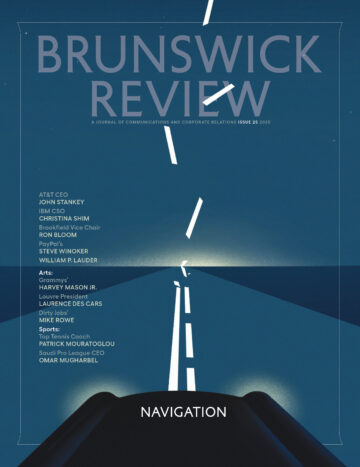
Navigation
Most read from this issue

A Return to Energy Realism?
